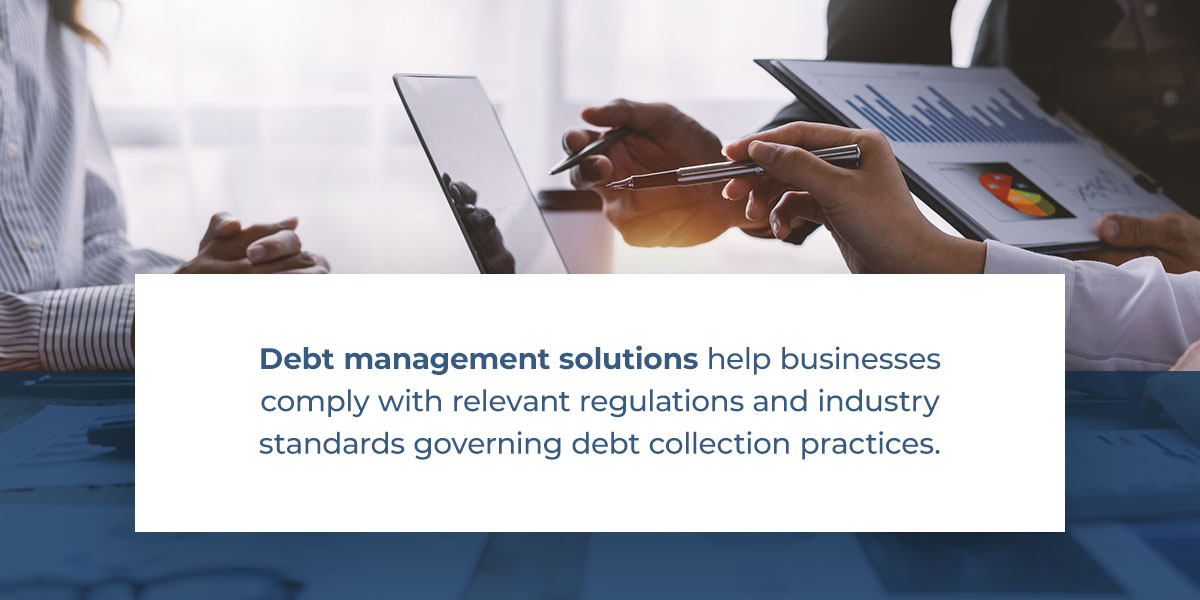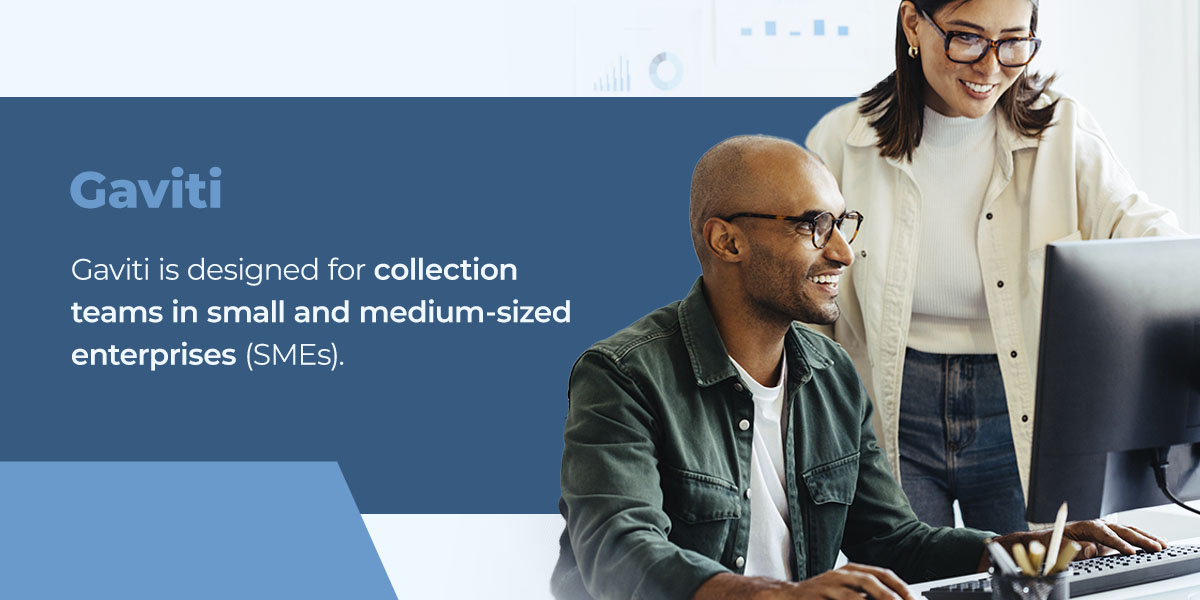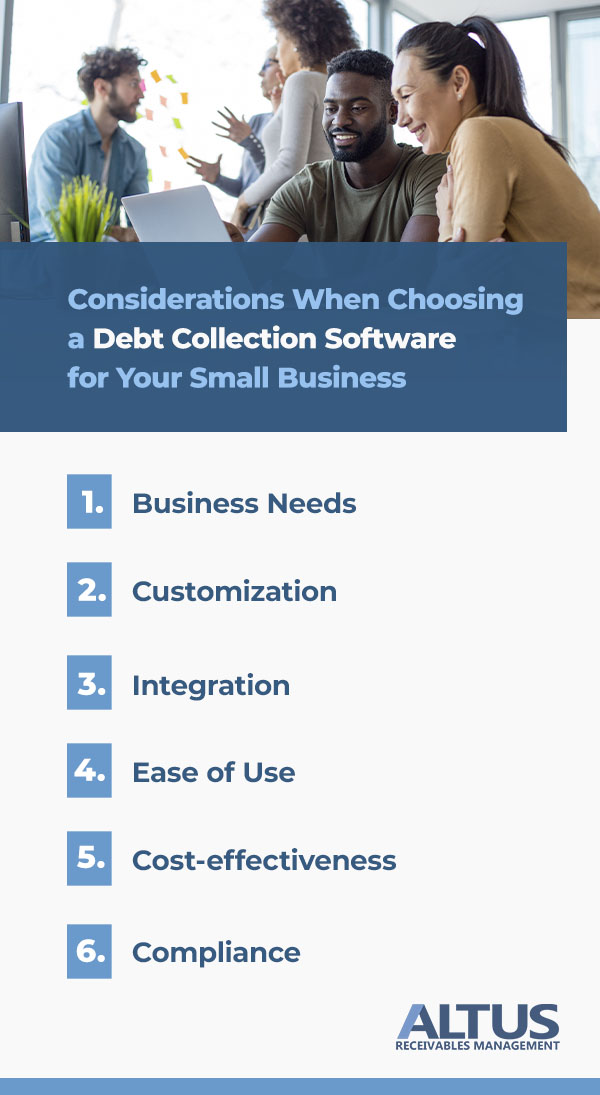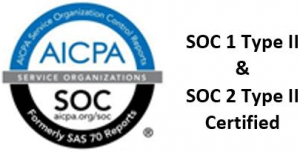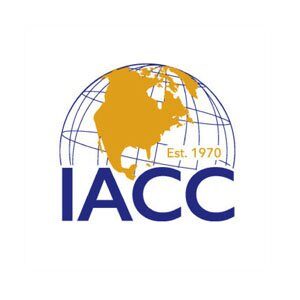Companies are increasingly using advanced digital tools to increase their debt recovery efforts. Different platforms have varying capabilities, but most streamline the collection process by providing automated solutions. For example, debt recovery software can replace manual processes such as dunning, payment tracking, and settlement processing. Others can also provide detailed reports and analytics to help collectors make informed decisions.
This guide discusses B2B debt collection platforms and why they are growing in popularity. We’ll also provide a list of the top 10 tools and considerations when making a decision.
What Is a Business Debt Management Software?
Debt management software is a digital platform allowing businesses to streamline and automate the debt collection process. The software usually features debt information management, automated communication, payment tracking, compliance monitoring, and reporting functionalities. These capabilities improve efficiency in debt collection efforts.
Depending on the software type, users can access and use the platform on a website, application, or both. Some software is linked to debt collection agencies providing third-party recovery services, while others are used in-house. The option depends on the business’s ability to build and manage the platform and technicians.
Small and midsize businesses usually leverage third-party platforms due to their affordability and convenience. Developing a world-class debt management tool requires tremendous resources. Thus, instead of diverting funds from your core operations, an effective strategy is utilizing already-existing platforms. The debt collection agency that owns the software maintains the platform and the team, saving users significant money, time, and effort.
Reasons to Use Digital Debt Management Solutions
Businesses use B2B debt solutions to streamline operations. This functionality can increase cash flow, helping to drive business growth:
1. Optimize Collection Management
Digital debt management tools automate various parts of the collection process. They remove mundane, time-consuming tasks and reduce errors. The specific features vary depending on the software but can generally perform functions like sending payment reminders, tracking outstanding debts, and scheduling follow-ups. These capabilities allow your team to focus on more strategic activities, improving the overall efficiency in managing B2B debts.
2. Improve Organization
Debt management platforms centralize debt-related information in one place. This feature provides a comprehensive overview of outstanding balances, payment history, and debtor details. A centralized database enhances organization and accessibility, allowing your team to quickly retrieve relevant information, track progress, and make informed decisions.
3. Enhance Communication
Debt collection software facilitates seamless communication between teams and the debt collection agency. For example, some tools offer automated notifications through emails and text messages, allowing you to engage with debtors effectively. Improved communication can increase timely payments and strengthen relationships with B2B partners. It maintains transparency and professionalism, which are integral in debt collection interactions.
4. Adhere to Compliance Requirements
Debt management solutions help businesses comply with relevant regulations and industry standards governing debt collection practices. These tools often include built-in compliance checks, customizable workflow, and audit trails to track interactions with debtors. These capabilities can help demonstrate adherence to legal requirements. By leveraging compliance debt management solutions, your business mitigates the risk of regulatory violations and maintains ethical practices in B2B debt collection processes.
5. Make Data-Driven Decisions
Digital debt collection tools can provide valuable insights through reporting and analytics features. This feature can offer visibility into key performance metrics related to commercial debts. Your business can make informed decisions by analyzing data collection rates, aging accounts receivable, payment trends, and the effectiveness of collection strategies, your business can make informed decisions. You can optimize debt recovery efforts by allocating resources efficiently and improving overall financial outcomes.
6. Reduce Bad Debts
By sending regular reminders and escalation notices, businesses can prompt debtors to prioritize payments. This strategy can prevent debts from turning into bad debts due to neglect or oversight. Moreover, having clear insight into overdue accounts can help you identify high-risk clients. You can leverage that information to enhance collections and proactively prevent bad debts.
7. Enhance Customer Experience
Debt collection solutions can improve customer experience in many ways. First, by sending regulator reminders to debtors, they can make timely payments and reduce potential penalties. Second, most platforms have digital payment and self-service capabilities, eliminating the need for debtors to travel to physical locations to make payments. Third, through personalized communication, businesses can strengthen relationships with clients and potentially increase the success of debt resolution.
The Best B2B Debt Management Software
Many digital platforms exist, but some have unique features. The option you choose depends primarily on your needs. However, some provide valuable, improved debt collection efforts for businesses. Below are the top 10 debt management applications:
1. LeadSquared
LeadSquared is a multipurpose digital tool with sales, payment, and debt management capabilities. The collections customer relationship management (CRM) platform allows you to track and follow up with defaulters efficiently. The software also lets you predict debt recovery, potentially increasing collection rates.
Other key features include:
- Organizing defaulters into groups based on past due dates, outstanding balance credit repayment history, and repayment intention.
- Automating communication and notifications to allow call centers and collection agents to stay on top of their tasks.
- Streamlining workflows for collections through automatic meeting scheduling, day planning, and case prioritization.
- Providing data analytics on defaulting customers, performance tracking, and state of business.
2. ARM STRONG
ARM STRONG is a digital platform specially designed for commercial debt recovery. Altus Receivables Management developed the software in partnership with Salesforce.com, a world-renowned CRM software provider. ARM STRONG has advanced capabilities, including the following:
- Automating essential functions such as reminders and payment processing
- Leveraging an easy-to-use customer portal
- Accessing detailed reporting
- Viewing invoicing and trust statements
- Viewing collection notes and call recordings
- Communicating directly with the Altus team
- Getting real-time placement updates
3. Beyond ARM
Beyond ARM is a closed-based debt recovery platform for small and large companies. It enables users to manage account receivables and access information like credit and risk ratings and reports. Beyond ARM also has analytics capabilities, providing insights into debt recovery activities. The features can be summarized as follows:
- Controlling the system’s action flow
- Integration with services like LexisNexis, CompuMail, and QwikDial
- Accessing smart calling and messaging
- Continual server backups
4. Gaviti
Gaviti is designed for collection teams in small and medium-sized enterprises (SMEs). The platform automates accounts receivable management, helping your team:
- Mitigate credit risks
- Enhance payments and reconciliation
- Improve collections and reduce days sales outstanding (DSO)
- Improve visibility and accountability
Gaviti can generate personalized dunning messages and provide workers with a centralized workspace.
5. ICanPe
ICanPe is a credit management platform powered by artificial intelligence (AI) that automates collections and payments. The software operates in six primary steps. First, it collates information from traditional and alternate sources, then leverages AI and machine learning (ML) capabilities to evaluate borrower behavior. Based on the results, the system creates settlement options and communicates with the borrower to activate the transaction. ICanPe collects and processes the payments. Once that is complete, the portfolio dashboard is updated, and a notification is sent to the lender.
Additional features include:
- Payment monitoring
- Real-time dashboards on borrower interaction and collections
- Advanced security
6. Kuhlekt
Kuhlekt is a cloud-based system that manages accounts receivable, debt recovery processes, and credit control. It is an all-in-one solution for order-to-cash needs. Kuhlekt integrates directly with the preferred enterprise resource planning (ERP) platform, allowing the user to port customers and access item information seamlessly across platforms. Kuhlekt also collects and records borrower information at a centralized location.
Other features are:
- Detailed dashboard showing the status and overview of accounts
- Comprehensive metrics and key point indicators (KPIs) to manage team performance
- Multiple to-do lists ensuring prompt customer contacts, dunning runs, and provisioning
- A self-service portal that allows clients to resolve account management requests
- Disputes and claims recording and process automation
7. Growfin
Growfin is purpose-built for B2B finance teams dealing with large invoices. The platform streamlines the collection process and reduces DSO with the following capabilities:
- Cash tracking and reporting
- Invoice-to-cash process automation
- Borrower insight, including the likelihood of payment within a short period
- Enhanced team collaboration
Growfin also has a built-in tool that calculates your return on investment (ROI) when you use the software.
8. Ameyo
Ameyo is enterprise debt collection software capable of handling first-level queries. It optimizes debt recovery by auto-segmenting borrower categories based on behavior, debt age, and delinquency level. The platform automatically maps and distributes cases based on geographical location, agent availability, and last payment reminder. Also, Ameyo sends personalized payment notifications to debtors to help them keep track of due dates.
The following characteristics make Ameyo unique:
- Complete agent and borrower management
- Extensive analytics dashboard detailing collection efficiency, team performance, and customer insights
- Humanized collections bot
- Omnichannel interactions
9. TurnKey Lender
TurnKey Lender is an end-to-end loan management software that supports various lending operations. The company also has a team of engineers who help organizations develop solutions according to their needs. The available solutions cover traditional and alternative lending, SME financing, in-house financing, trade financing, and more. The key features are:
- One-stop automation for common commercial lending challenges, such as loan management, debt collection, and reporting
- Commercial loan origination
- Reporting and analytics to provide real-time insights into trends and business performance
- Electronic document management
10. Chaser
Chaser is a complete accounts receivable automation software that automates and humanizes processes involving unpaid invoices. The platform lets you conduct credit checks, track payments, communicate with debtors, and recover unpaid balances. Chaser is easy to use with a clean user interface. The standout capabilities include:
- Automatically chasing outstanding payments
- Reconciling information from the accounting system
- Two-way application programming interface (API) integration with multiple platforms
- Chaser has won several awards and continues to grow exponentially.
Considerations When Choosing a Debt Collection Software for Your Small Business
Debt collection apps have varying attributes. Some capabilities are common among most platforms, but others are unique. Therefore, before choosing software, it’s best to consider essential factors, such as:
1. Business Needs
Businesses have different needs, and it’s vital to choose a platform that can help you meet your desired goals. For example, do you wish to automate functions like payment track or processing, or do you want to prioritize debt collection? Do you prefer a third-party expert handling recovery efforts, or do you want to empower your in-house team? Your plans and strategies can help you choose the ideal platform. The bottom line should be to streamline operations and increase your ROI.
2. Customization
Some software provides one-size-fits-all solutions, while others are customizable. Considering that businesses have unique needs, it’s essential to choose a platform that you can tailor to your workflow. While templates may exist for reports and communication, you should be able to modify them to suit your profile and business requirements. Adaptable platforms enhance flexibility and offer a personalized approach to debt collection.
3. Integration
Personalization is crucial, but the system should also integrate seamlessly with other tools and systems. For example, if you have preferred accounting software, CRM platforms, or payment processors like most businesses do and only need a system for debt collection, the debt collection tool should accommodate the existing applications. Integration streamlines data exchange, eliminates manual data entry errors, and enhances operational efficiency.
4. Ease of Use
Choose a debt collection software that is user-friendly, easy to navigate, and intuitive. First, consider the learning curve for your team members and opt for a solution that requires minimal training. That way, you can maximize efficiency and adoption. Second, borrowers using the platform should find it easy to use and helpful. Users will likely interact with the platform with simple and functional interfaces.
5. Cost-effectiveness
Set a budget and choose software that matches your finances. Consider factors like setup costs, subscription fees, and additional charges for support services. Also, note that the most affordable options are not always the best. Compare prices and select a platform that provides value for money while aligning with your financial resources.
6. Compliance
Prioritize debt collection software that includes built-in compliance checks, audit trails, and other features to ensure adherence to relevant regulations and industry standards. This can help mitigate legal risks, maintain ethical debt collection practices, and safeguard your business’ reputation.
Frequently Asked Questions About Business Debt Management Tools
To broaden your understanding and help you make informed decisions, let’s address some commonly asked questions:
How Does a Debt Collection Software Work?
Debt collection software has different functionalities. The common ones include data centralization, communication automation, payment tracking, report generation, and debt collection. The primary purpose is to manage businesses’ debts and remove operational bottlenecks.
How Much Does Debt Collection Software Cost?
The cost of debt collection software varies. For example, a company with its own platform will usually pay for the development and the team to maintain it, which is more expensive. A business using a third-party platform may pay a monthly subscription fee with additional service charges, depending on the agreement. However, this second option is often preferable for small and medium-sized companies as it is a strategic and affordable alternative.
Is Debt Collection Software Suitable for Small Businesses?
Yes, debt collection software can be beneficial for small businesses seeking to manage debts effectively. Before making a decision, assess your needs and choose a platform that meets your budget. The software should also have functionalities that improve your debt recovery efforts.
Contact Altus Receivables Management to Learn More
Altus is a world-renowned commercial collection agency that helps businesses retrieve debt from customers. We leverage an advanced digital platform — ARM STRONG — to obtain insights and optimize recovery efforts. The technology accelerates key functions of debt collection, eliminating delays and pain points.
Altus has provided practical solutions since 1994, gaining tremendous industry experience over the years. We comply with the relevant debt collection laws with multiple certifications, including PCI DSS and service organization control (SOC). Our trained agents are ready to listen to your needs and help you drive growth. Contact us now to learn more!


